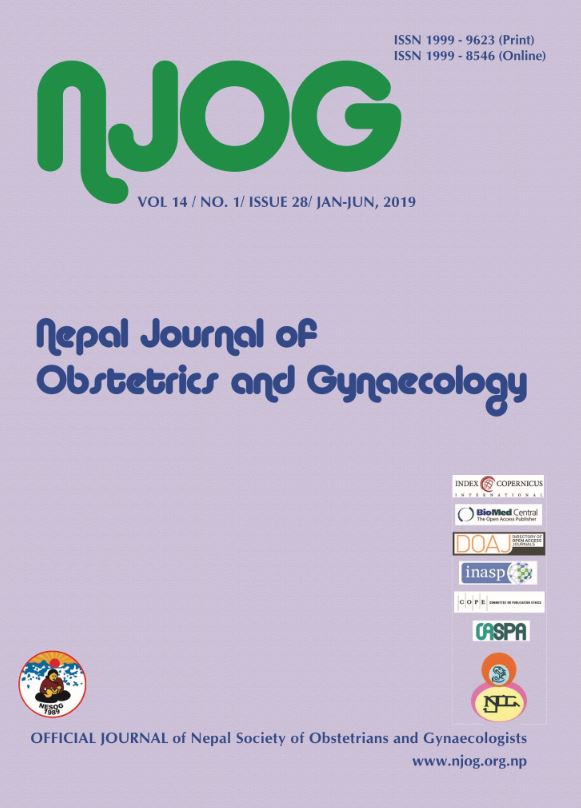Iatrogenic Genitourinary Fistula: Changing Trends
Abstract
Aims: To study the frequency of iatrogenic cause amongst the surgery done for genitourinary fistula and to study the type and cause of iatrogenic genitourinary fistula.
Methods: This is retrospective study of women undergoing surgery for genitourinary fistula repair from year 2013 to 2018. The analysis considers frequency and characteristics of type of fistula.
Results: Out of 223 genitourinary fistula 75 (33.6%) were iatrogenic. Vaginal vault fistula were 25% followed by uretero-vaginal fistula (32.9%), vesico-vaginal fistula (32.9%) and there were 4 iatrogenic recto-vaginal fistula; 81.6% of the iatrogenic fistula had preceding history of hysterectomy followed by emergency caesarean section (17.1%). There is annual increasing trend in iatrogenic fistula repair from 3 to 23.
Conclusions: Women undergoing hysterectomy were under risk for iatrogenic fistula. Optimum work environment is important to reduce surgical error during procedures. Operating training should be emphasised on optimal surgical skills, decision making.
Keywords: genitourinary fistula, ureteric fistula, vault fistula
Downloads
Downloads
Published
How to Cite
Issue
Section
License
Copyright on any research article in the Nepal Journal of Obstetrics and Gynaecology is retained by the author(s).
The authors grant the Nepal Journal of Obstetrics and Gynaecology a license to publish the article and identify itself as the original publisher.
Articles in the Nepal Journal of Obstetrics and Gynaecology are Open Access articles published under the Creative Commons CC BY-NC License (https://creativecommons.org/licenses/by-nc/4.0/)
This license permits use, distribution and reproduction in any medium, provided the original work is properly cited, and it is not used for commercial purposes.



